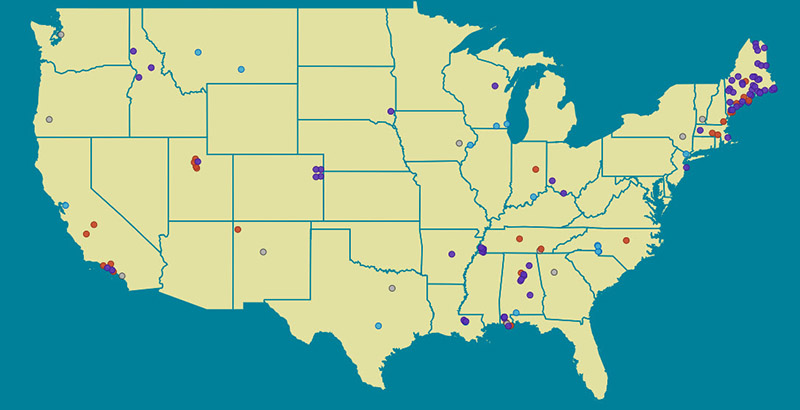Report: School District Secessions Are Accelerating, Furthering ‘State Sanctioned’ Segregation

Updated April 24
Several years ago, school district secession efforts received national attention when the community of Gardendale, Alabama, waged a fierce battle against the greater county school system. In a years-long campaign, people in the predominantly white and middle-class Birmingham suburb fought to split from the predominantly black Jefferson County school district.
Ultimately, a court struck down the effort, citing the community’s racial motives. Since then, according to an EdBuild analysis, school district secession efforts across the country have accelerated. EdBuild argues that residents who push to create their own school systems are often motivated by one overarching factor: school funding.
“We are seeing over and over that it’s about the money,” said Zahava Stadler, director of policy at EdBuild, a think tank focused on education funding equity. She pointed to efforts in Malibu, California, to split from a unified district with Santa Monica. “From the outside, it might seem a little bit silly to think there’s a big financial divide between Santa Monica and Malibu, but really when you’re on the ground in that community, there is a difference and it really came down to sharing — or not sharing — the money raised” by parent-teacher associations. The associations typically raise money for a range of school spending, like additional programs, staff or activities, but have also raised equity concerns in recent years.
When one district splits into two, the move often creates a wealthy school system that leaves behind one with high poverty and poor funding. Since 2000, at least 128 communities have launched campaigns to secede from their local school districts to create their own, smaller education systems. Of those, 73 have been successful, 10 of them finalized in just the past few years. Another 17 secession efforts are currently underway.
Of the new districts created through secession, the majority are whiter and wealthier than the school systems they left behind, according to EdBuild. Those secession districts also tend to have higher property values and household incomes — an important factor since nearly half of all education funding is generated through local sources, primarily property taxes from residents within a school district’s borders.
With 30 states that currently permit such fracturing, school district secession efforts aren’t confined to a specific geographic region. Since 2017, however, the majority of successful secessions — eight of the past 11 — have occurred in Maine. Since 2013, 41 municipalities in Maine have withdrawn from regional school districts, according to the state education department. While school funding has played a role in the Maine secessions, so too have state efforts to consolidate districts. Residents in some communities were concerned that their local schools would close as a result of the district consolidations.
The history of school district secession stems back to the U.S. Supreme Court’s 1954 decision in Brown v. Board of Education, which found segregation in public schools unconstitutional. In the South, municipal secessions from county-based school districts were a popular tool some communities used to resist desegregation. There have been 10 successful school district secessions in Alabama alone since 2000, and another attempt is ongoing. Alabama has a permissive district secession law, EdBuild argues, that allows for separations that intensify socioeconomic and racial divisions.
North Carolina law doesn’t allow for school district secessions, but residents in suburban Charlotte recently got a workaround. Under a state law approved last year, residents in four Charlotte suburbs were permitted to create charter schools that gave enrollment priority to their direct communities. Meanwhile, a provision in the state budget allowed municipalities to direct certain property tax revenues to campuses in their individual neighborhoods.
“So if you can create a school that’s only for kids in your town and you’re allowed to direct money to a school that’s in your town, that together creates something that is secession in all but name,” Stadler said.
States must reimagine their school funding systems so communities don’t feel the incentive to secede from their broader communities, according to the EdBuild report, which updates a 2017 report on the same topic. All students, Stadler said, should have an equal shot at a fairly resourced education.
“The notion of allowing small enclaves to withhold a portion of their taxes to serve only themselves is unique to education,” according to the report. “Imagine allowing citizens to withhold taxes for libraries that they don’t use or sidewalks they don’t walk on.”
Get stories like these delivered straight to your inbox. Sign up for The 74 Newsletter

;)
